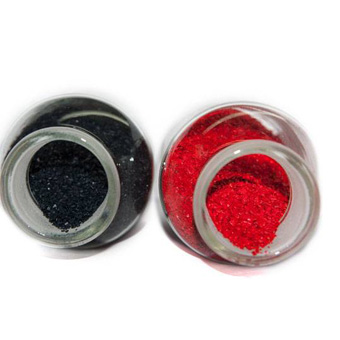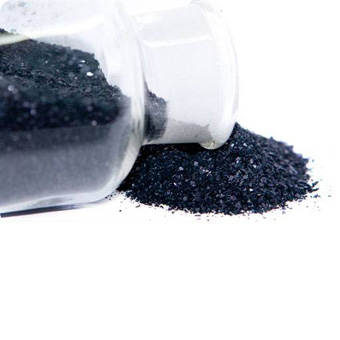
PU Color Chip
Dry Polyurethane Leather (PU Artificial Leather), environmental Color Chip Pigments for tinting, changing color and printing.
Jiuhlih Brand’s NPU-CHIP is developed successfully under years of research by professionals, and fits human’s evaluation of environmental consciousness and relevant security standard requirements. Polyurethane pigment is made through the craft procedure of mixing, compounding, and crushing via special equipment, by applying suitable pigments with selected environmental resin and proper processing additives. With no heavy metal (comply with regulation EN-71 part3-1994), no Phthalates (6P), and no migration out of azo Aromatic Amine. Polyurethane pigment's green environmental chip-form colorant without hazardous toxicant such as PVC, VCM, Toluene. Please select and use with ease.
High concentration, less amount for use, high brightness, good dispersion and diffusivity, good fastness, no contamination, no wastage, no odors, no caking, no heavy metal, good quality stability, easy to be precisely measured, low cost of tinting, convenient to store and use, and long-term storage.
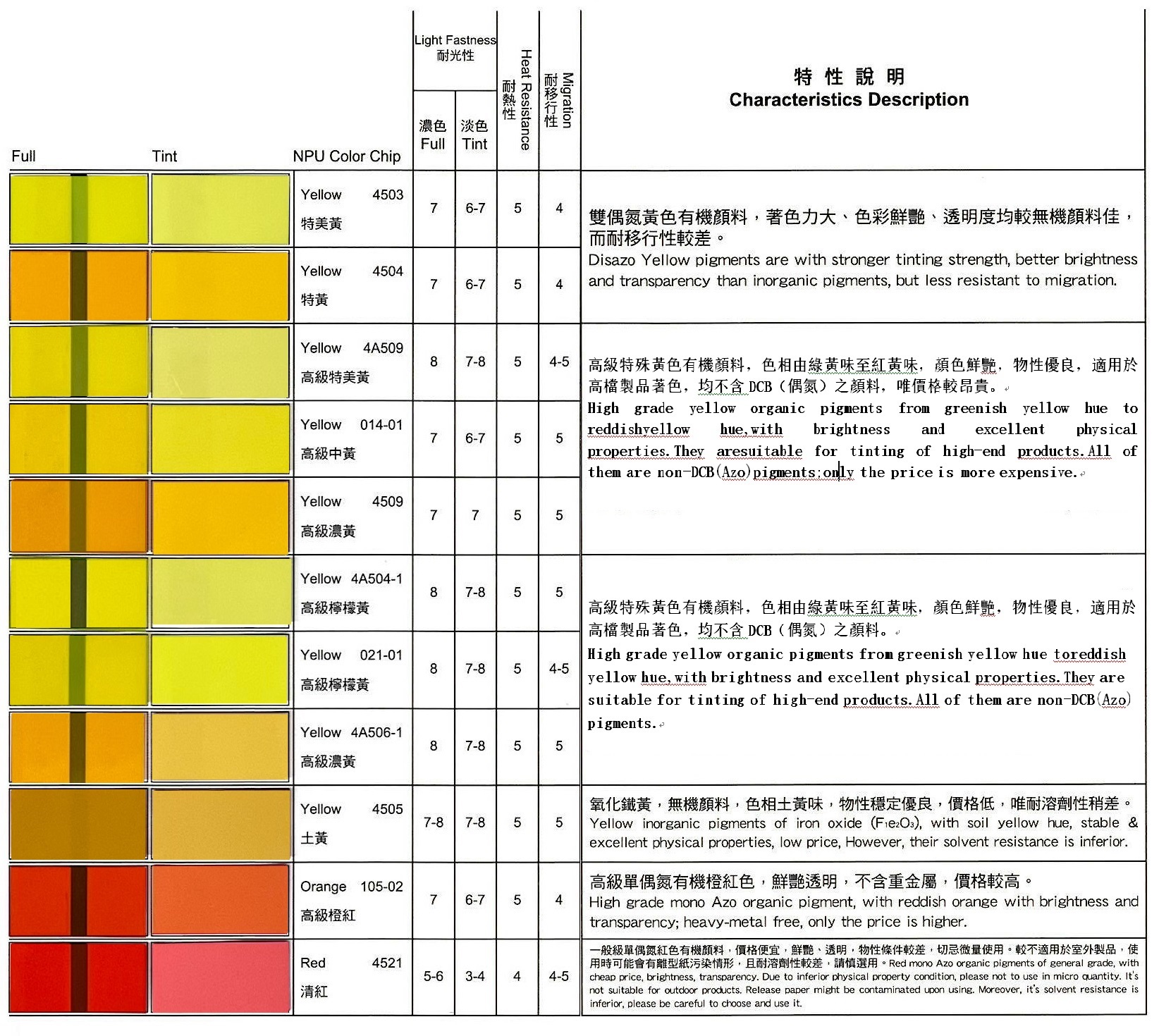
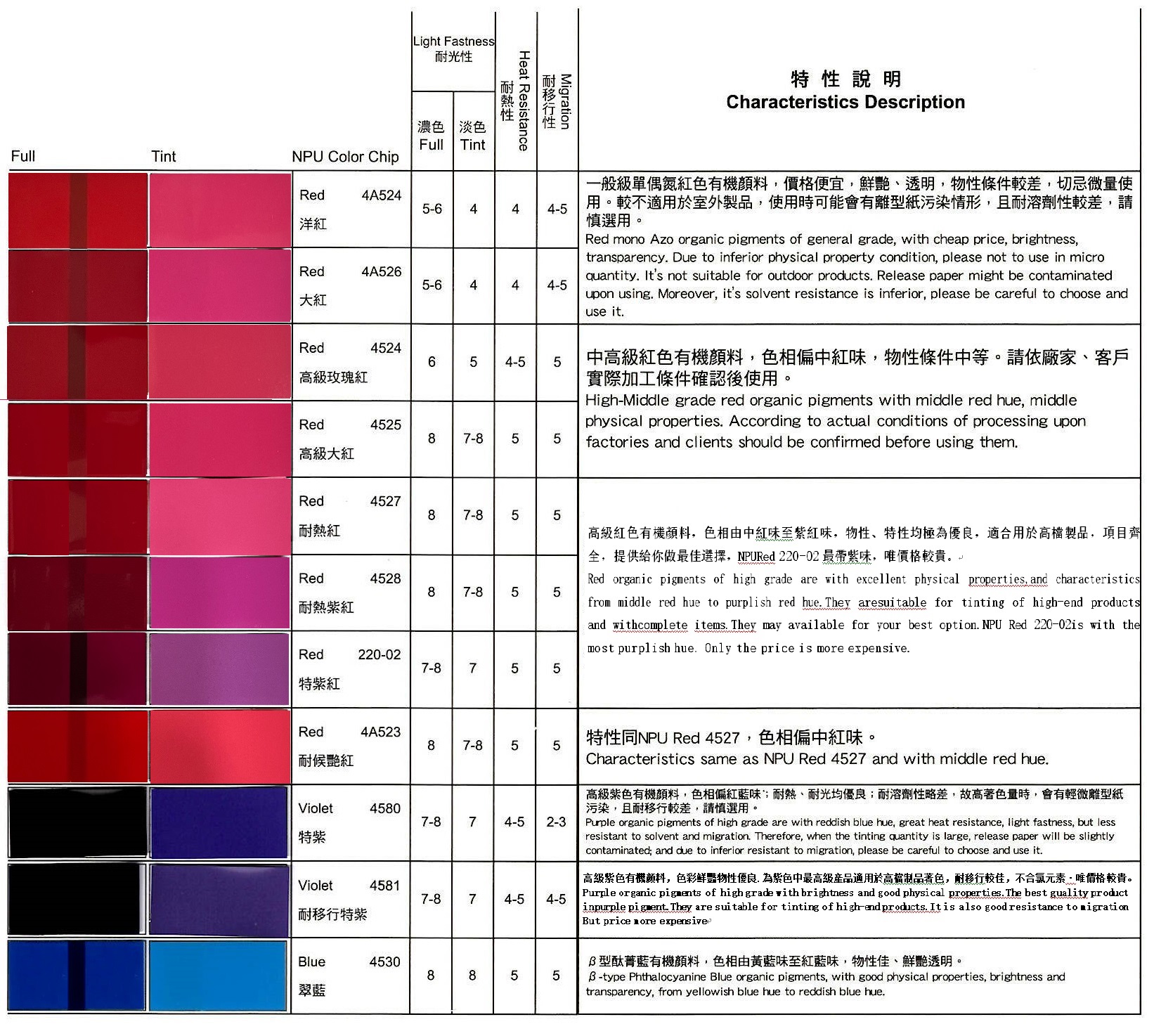
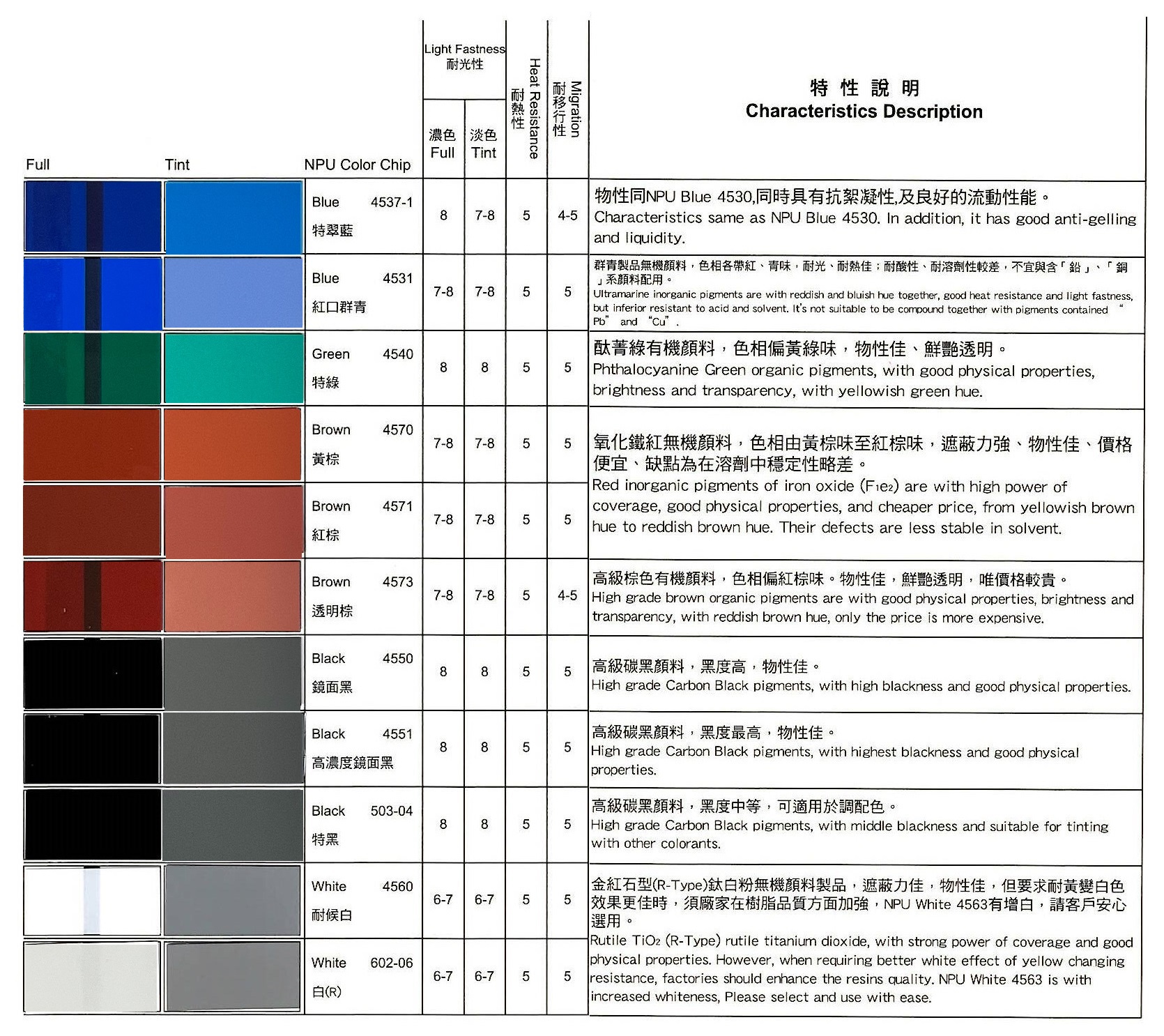
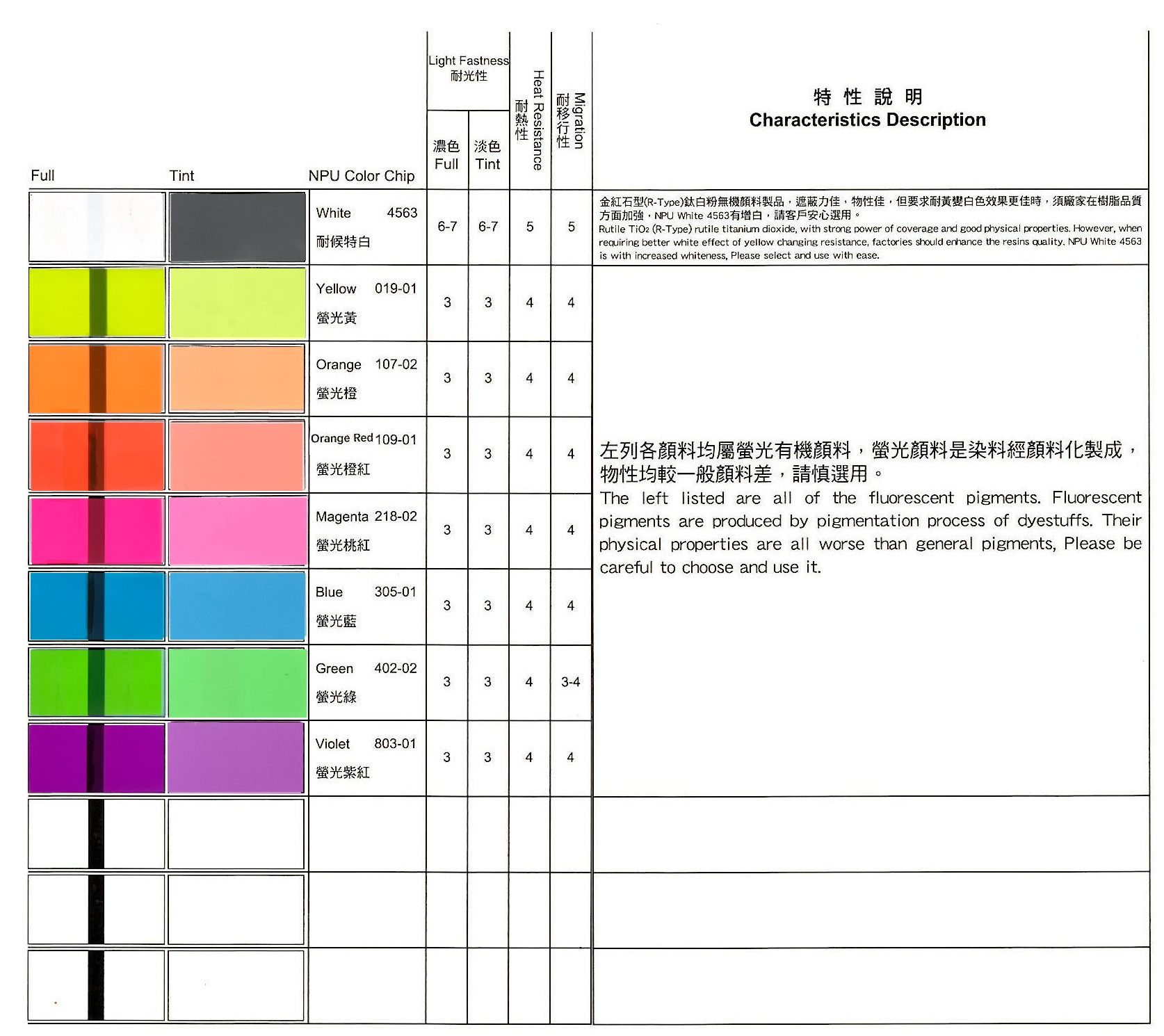
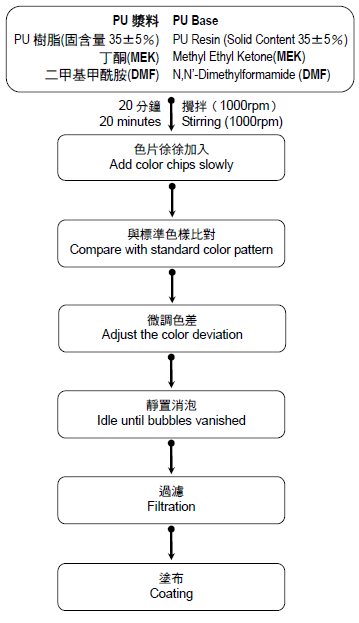
|
|
Organic Pigments
|
Inorganic Pigments
|
Black Pigments
|
White Pigments
|
|
PU Compound
|
100
|
100
|
100
|
100
|
|
NPU Chip Color
|
4
|
5
|
4
|
10
|
Tint
|
|
Organic Pigments
|
Inorganic Pigments
|
Black Pigments
|
White Pigments
|
|
PU Compound
|
100
|
100
|
100
|
100
|
|
NPU Chip Color
|
1
|
2
|
0.5
|
10
|
|
NPU 4560 - White
|
5
|
5
|
10
|
-
|
|
NPU 4550 - Black
|
-
|
-
|
-
|
0.5
|
※ Coating and Oven Condition: 0.18mm x 125°C x 3 Mins
Method of Testing for Physical Property
1.Light Fastness
|
Scale
|
Result
|
|
8
|
Outstanding
|
|
7
|
Excellent
|
|
6
|
Very Good
|
|
5
|
Good
|
|
4
|
Fairty Good
|
|
3
|
Poor
|
|
2
|
Poor
|
|
1
|
Very Poor
|
2.Scale of Heat Resistance, Migration, Resistance to Acids or Alkalis, and Resistance to Sulfur.
|
Scale
|
Result
|
|
5
|
Very Good
|
|
4
|
Good
|
|
3
|
Fairty Good
|
|
2
|
Poor
|
|
1
|
Very Poor
|
